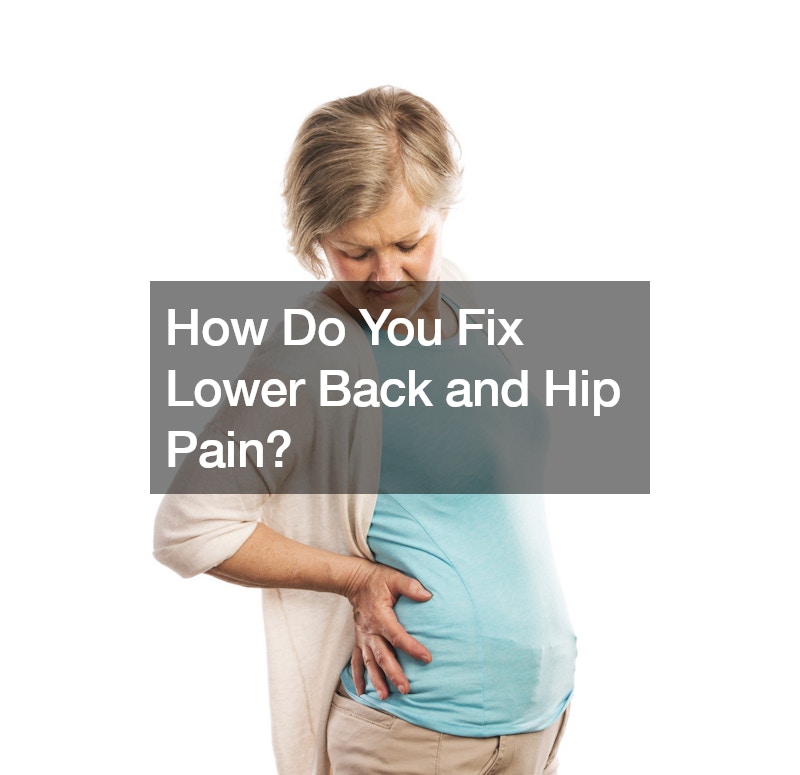How Do You Fix Lower Back and Hip Pain?


Lower back and hip pain can significantly hinder daily activities and reduce quality of life. Addressing these issues often involves a combination of lifestyle adjustments, physical therapy, and medical treatment. Here’s a comprehensive guide to managing and potentially alleviating lower back and hip pain.
Understanding the Causes
Lower back and hip pain can stem from various sources including muscle strain, arthritis, herniated discs, or even posture-related issues. It’s essential to diagnose the specific cause of the pain accurately.
A healthcare professional can assess your symptoms, perform physical examinations, and possibly recommend imaging tests like X-rays or MRIs to pinpoint the problem.
Lifestyle Modifications
Posture Correction: Poor posture is a common culprit behind back and hip pain. Maintaining proper posture can relieve pressure on your spine and hips. When sitting, choose a chair with good lower back support, keep your feet flat on the floor, and avoid slouching. For standing tasks, keep your weight balanced on your feet.
Weight Management: Excess weight can increase the burden on the spine and joints, exacerbating pain. A balanced diet and regular exercise can help manage weight and reduce the strain on your body.
Ergonomic Adjustments: Modify your workspace to ensure it’s ergonomically friendly. This includes setting up your computer screen at eye level, using a chair that supports your spine’s natural curve, and taking regular breaks to stretch and move around.
Physical Therapy and Exercises
Stretching: Gentle stretching can improve flexibility, relieve stiffness, and reduce pain. Focus on stretches that target the lower back, hips, and legs. Yoga and Pilates are excellent forms of exercise that incorporate these beneficial stretches.
Strengthening Exercises: Building strength in the abdominal and back muscles can support your spine, reducing pain. Exercises like planks, bridges, and pelvic tilts are effective. Always consult with a physical therapist or fitness professional to ensure you’re performing these exercises correctly and safely.
Low-Impact Cardio: Activities like swimming, cycling, and walking are low-impact and can help increase blood flow to the back and hip areas, promoting healing and reducing pain.
Medical Treatment Options
Medications: Over-the-counter pain relievers such as ibuprofen or acetaminophen can be used to manage pain. In more severe cases, your doctor may prescribe stronger medications.
Therapeutic Injections: For persistent pain, injections such as corticosteroids can provide relief by reducing inflammation around the nerves.
Alternative Therapies: Treatments like acupuncture or chiropractic care can offer relief for some individuals and are worth considering as part of a comprehensive pain management plan.
Watch the video above to learn more about fixing your lower back hip pain!.
